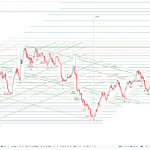Looking forward, traditional investments are unlikely to produce attractive returns over the next decade. The days of investing in an S&P 500 index fund and closing your eyes and hoping for the best are over.
Stocks are expensive, and interest rates on 10-year Treasuries are near historic lows as well.
Frankly, neither stocks nor bonds are likely to offer investors attractive risk?adjusted nominal or real returns over the next few years. (My model portfolio recommends alternative investments, some of which we’ll discuss below.)
Here’s why traditional investments are doomed to underperform, and why you should severely limit your exposure to them before the Super Crash.
And here’s what you should buy instead….
The Stock Market Has Reached Saturation Point
The stock market has been on life support for some time now, and it can’t keep up the appearance of vitality for much longer. Investors who continue to rely on a rising market courtesy of the kindness (or errors) of central bankers are likely to be very disappointed in the years ahead.
The S&P 500 enjoyed an enviable run since hitting its post?crisis low in March 2009, more than tripling in value by mid?2015. This performance was due to a strong recovery in corporate earnings from 2009 recession lows, as well as massive liquidity flowing into the market courtesy of the trillions of dollars of new money created out of thin air by the Federal Reserve and other global central banks. Stock buybacks were one of the primary sources of this liquidity – but like any shot in the arm, they only worked for a while and were paid for with huge borrowings that now weigh down corporate balance sheets.
Unfortunately, the Fed’s policies failed to create sustainable economic growth and reached the point of diminishing returns from an economic and market standpoint by the end of 2014. It is arguable that the post-crisis bull market ended when the Fed terminated its QE program in October 2014 – the “stealth bear market” I’ve discussed elsewhere.
Two of the most highly respected strategists in the investment world, Rob Arnott at Performance Analytics and Jeremy Grantham at Grantham Mayo van Otterloo (GMO), forecast low returns for stocks over the next 7-10 years. In fact, adjusted for inflation, they are projecting negative returns.As of December 31, 2015, GMO’s 7?year real (i.e., inflation-adjusted) return forecasts was the following compared to the 6.5 percent long?term historical return for U.S. equities:
U.S. Large Cap ?1.8%
U.S. Small Cap 0.1%
U.S. High Quality 0.1%
International Large Cap 0.3%
International Small Cap ?1.2%
Emerging Markets 4.0%
Performance Analytics had similar 10?year real return projections as of mid-year 2015:
S&P 500 1.1%
Russell 2000 0.5%
MSCI EAFE (International) 5.3%
MSCI Emerging Markets 7.9%
Both firms forecast that only non?U.S. equities are likely to generate meaningful returns over the next decade, and even those returns are relatively muted. And their projections for emerging markets will only materialize if the U.S. dollar weakens – if the dollar remains strong, emerging markets will do very poorly.












Leave A Comment